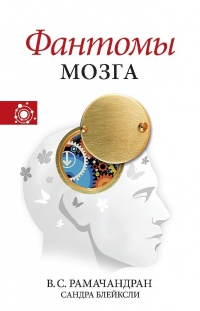Читать книгу "Пруст и кальмар. Нейробиология чтения - Марианна Вулф"
Шрифт:
Интервал:
Закладка:
Еще одна проблема – реакция на специальную терапию детей с затруднениями чтения. В некоторых школах диагноз зависит от отрицательной реакции ребенка на успешную во всех других отношениях терапию. См.: See L. Fuchs and D. Fuchs (1998). Treatment Validity: A Simplifying Concept for Reconceptualizing the Identification // Learning Disabilities Research and Practice, 4. P. 204–219.
Другая тема, на которой делается акцент в этой книге, касается нейробиологических причин дислексии. См.: B. McCandliss and K. Noble (2003). The Development of Reading Impairment // Mental Retardation and Developmental Disabilities, 9. P. 196–203.
6. A. Ellis (1987). On Problems in Developing Culturally Transmitted Cognitive Modules // Mind and Language, 2 (3). P. 242–251.
7. См. обзоры в следующих публикациях: M. Habib (2000). The Neurological Basis of Developmental Dyslexia: An Overview and Working Hypothesis // Brain, 123. P. 2373–2399; S. Heim and A. Keil (2004). Large-Scale Neural Correlates of Developmental Dyslexia // European Child and Adolescent Psychiatry, 13. P. 125–140; McCandliss and Noble. The Development of Reading Impairment. Полезны также книги: V. Berninger and T. Richards (2002). Brain Literacy for Educators and Psychologists. New York: Academic Press; S. A. Shaywitz (2003). Overcoming Dyslexia. New York: Knopf; M. J. Snowling (2002). Reading Development and Dyslexia // Handbook of Cognitive Development. U. C. Goswami (ed.). Oxford: Blackwell. P. 394–411.
8. A. Kussmaul (1877). Die Störungen der Sprache: Versuch einer Pathologie der Sprache. Leipzig: F. C. W. Vogel.
9. J. Déjerine (1892). Contribution à l’étude anatomo-pathologique et clinique des différentes variétés de cécité verbalè // Mém. Soc. Biol., 4. P. 61. Эта работа рассматривалась Норманом Гешвиндом, см.: N. Geschwind. The Anatomy of Acquired Disorders of Reading // Selected Papers. Dordrecht-Holland: Reidel. P. 4–19.
10. N. Geschwind (1965). Disconnexion Syndromes in Animals and Man // Brain, 27. P. 237–294, 585–644.
11. L. Fildes (1921). A Psychological Inquiry into the Nature of the Condition known as Congenital Word-Blindness // Brain, 44. P. 286–307.
12. P. Schilder (1944). Congenital Alexia and Its relation to Optic Perception // Journal of Genetic Psychology, 65. P. 67–88.
13. J. Kavanagh and I. Mattingly (eds.) (1972). Language by Ear and by Eye: The Relationship between Speech and Reading. Cambridge, Mass.: MIT Press. См. также следующие работы: D. Shankweiler and I. Liberman. Misreading: A Search for Cause. P. 293–317; M. Posner, J. Lewis, and C. Conrad. Component Processes in Reading: A Performance Analysis. P. 159–204; P. Gough. One Second of Reading. P. 331–358.
14. V. Hanson, I. Liberman, and D. Shankweiler (1983). Linguistic Coding by Deaf Children in Relation to Beginning Reading Success // Haskins Laboratories Status Report on Speech Research 73.
15. I. Y. Liberman et al. (1977). Phonetic Segmentation and Recoding in the Beginning Reader // Toward a Theory of Reading: The Proceedings of the CUNY Conference. A. S. Reber and D. L. Scarborough (eds.). Hillsdale, N.J.: Erlbaum; K. A. Hirsh-Pasek (1981). Phonics without Sounds: Reading Acquisition in the Congenitally Deaf. Неопубликованная диссертация, Пенсильванский университет; R. B. Katz, D. Shankweiler, and I. Y. Liberman (1981). Memory for Item Order and Phonetic Recording in the Beginning Reader // Journal of Experimental Child Psychology, 32. P. 474–484.
16. F. R. Vellutino (1979). Dyslexia: Theory and Research. Cambridge, Mass.: MIT Press; F. R. Vellutino (1980). Alternative Conceptualizations of Dyslexia: Evidence in Support of a Verbal-Deficit Hypothesis // Thought and Language/Language and Reading. M. Wolf, M. K. McQuillan, and E. Radwin (eds.). Cambridge, Mass.: Harvard Educational Review. P. 567–587; F. Vellutino and D. Scanlon (1987). Phonological Coding, Phonological Awareness, and Reading Ability: Evidence from a Longitudinal and Experimental Study // Merrill-Palmer Quarterly, 33. P. 321–363.
17. Один из примеров можно найти в статье: U. Goswami et al. (2002). Amplitude Envelope Onsets and Developmental Dyslexia: A New Hypothesis // Proceedings of the National Academy of Science, 99. P. 10911–10916.
18. Shaywitz. Overcoming Dyslexia.
19. J. K. Torgesen (1999). Phonologically Based Reading Disabilities: Toward a Coherent Theory of One Kind of Learning Disability // Perspectives on Learning Disabilities. R. J. Sternberg and L. Spear-Swerling (eds.). New Haven, Conn.: Westview. P. 231–262; J. K. Torgesen, C. A. Rashotte, and A. Alexander (2001). Principles of Fluency Instruction in Reading: Relationships with Established Empirical Outcomes // Dyslexia, Fluency, and the Brain. M. Wolf (ed.). Timonium, Md.: York. P. 333–355; J. K. Torgesen et al. (1999). Preventing Reading Failure in Young Children with Phonological Disabilities: Group and Individual Responses to Instruction // Journal of Educational Psychology, 91. P. 579–593; J. K. Torgesen (2004). Lessons Learned from Research on Interventions for Students who Have Difficulty Learning to Read // The Voice of Evidence in Reading Research. P. McCardle and V. Chabra (eds.). Baltimore, Md.: Brookes. P. 355–38.
20. M. W. Lovett, L. Lacerenza, S. L. Borden, J. C. Frijters, K. A. Steinbach, and M. DePalma (2000). Components of Effective Remediation for Developmental Reading Disabilities: Combining Phonologically and Strategy-Based Instruction to Improve Outcomes // Journal of Educational Psychology, 92. P. 263–283; National Institute of Child Health and Human Developments, NICHD (2000). Report of the National Reading Panel. Teaching Children to Read: An Evidence-Based Assessment of the Scientific Research Literature on Reading and Its Implications for Reading Instruction – Reports of the Subgroups. (NIH Publication No.00–4754.) Washington, D.C.: U. S. Government Printing Office; R. K. Olson, B. Wise, M. Johnson, and J. Ring (1997). The Etiology and Remediation of Phonologically Based Word Recognition and Spelling Disabilities: Are Phonological Deficits the ‘whole’ story? // Foundations of Reading Acquisition and Dyslexia: Implications for Early Intervention. B. Blachman (ed.). Mahwah, N.J.: Lawrence Erlbaum; F. Ramus (2001). Outstanding Questions about Phonological Processing in Dyslexia // Dyslexia, 7. P. 197–216; Shaywitz. Overcoming Dyslexia; P. Simos, J. Breier, J. Fletcher, B. Foorman, A. Mouzaki, and A. Papanicolaou (2001). Age-Related Changes in Regional Brain Activation during Phonological Decoding and Printed Word Recognition // Developmental Neuropsychology, 19 (2). P. 191–210; P. G. Simos, J. Breier, J. Fletcher, B. Foorman, E. Bergman, K. Fishbeck, and A. Papanicolaou (2000). Brain Activation Profiles in Dyslexic Children during Non-Word Reading: A Magnetic Source Imagery Study // Neuroscience Letters, 290. P. 61–65; Snowling. Reading Development and Dyslexia; B. W. Wise, J. Ring, and R. K. Olson (1999). Training Phonological Awareness with and without Explicit Attention to Articulation // Journal of Experimental Child Psychology, 72. P. 271–304.
Внимание!
Сайт сохраняет куки вашего браузера. Вы сможете в любой момент сделать закладку и продолжить прочтение книги «Пруст и кальмар. Нейробиология чтения - Марианна Вулф», после закрытия браузера.




